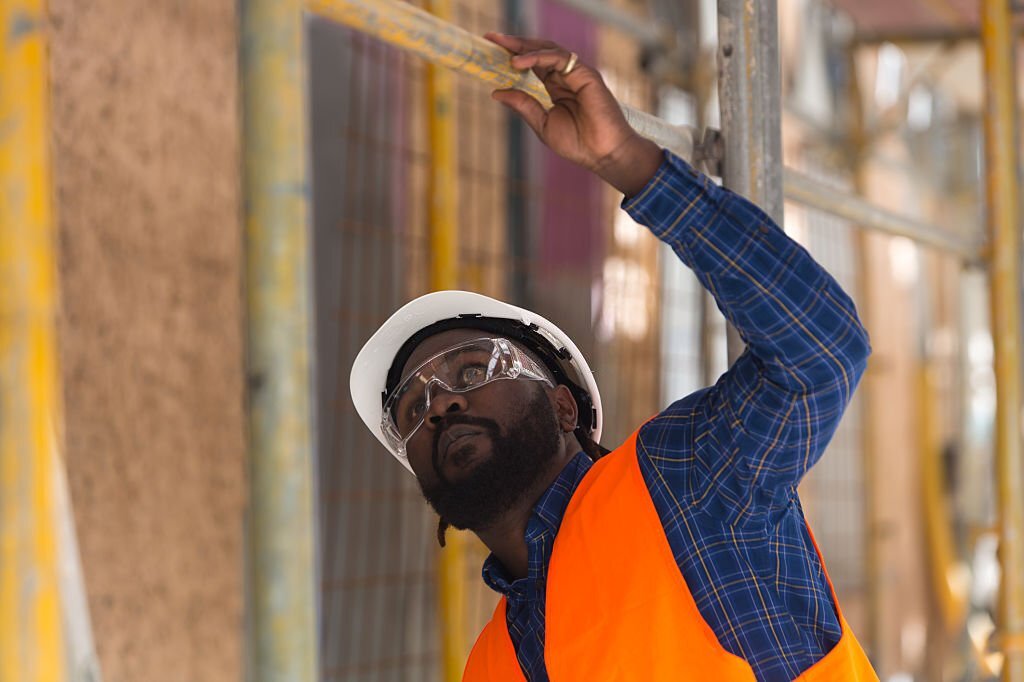Contents
- 1 Introduction
- 2 What is Scaffolding?
- 3 What are the different types of Scaffolding?
- 4 What are the Components of Scaffolding?
- 5 What is the importance of Scaffolding
- 6 What are Safety Measures in scaffolding?
- 7 Scaffolding in Different Industries
- 8 Conclusion
- 8.1 Q: How long does it take to erect scaffolding?
- 8.2 Q: Are there weight limits for scaffolding?
- 8.3 Q: Can scaffolding be used in adverse weather conditions?
- 8.4 Q: Do workers need to wear personal protective equipment (PPE) while using scaffolding?
- 8.5 Q: Can scaffolding be customized to fit irregular structures?
Introduction
In the world of construction, ensuring worker safety and efficiency is of paramount importance. Scaffolding, a temporary structure, plays a vital role in providing support and access to workers in various construction projects. This article explores the basics of scaffolding, its types, components, and its significance in different industries.
What is Scaffolding?
Scaffolding refers to a temporary framework or structure erected to support workers and materials during construction, maintenance, or repair projects. It acts as a platform for workers to perform tasks at heights, ensuring their safety while facilitating the efficient completion of projects.
What are the different types of Scaffolding?
Scaffolding systems can vary based on the specific requirements of a project. Here are some common types:
Single Scaffolding


Single scaffolding, also known as bricklayer scaffolding, is commonly used for brickwork. It consists of vertical members known as standards, placed at a distance of around 2-2.5 meters, and horizontal members called ledgers that are supported by the standards.
Double Scaffolding
Double scaffolding, also known as mason’s scaffolding, is used when the wall being worked on is weak and unable to support the weight of single scaffolding. It consists of two rows of standards with ledgers placed at right angles to each other. This provides greater stability and strength.
Cantilever Scaffolding
Cantilever scaffolding is employed when it is not possible to use standard scaffolding from the ground level. It is commonly used for repair and painting work on tall structures such as bridges and buildings. Cantilever scaffolding relies on needles or beams that are projected into the structure, supported by the floors below.
Suspended Scaffolding
Suspended scaffolding is typically used for tasks like window cleaning, painting, or maintenance work on tall buildings. It consists of platforms suspended from the roof or an overhead structure with the help of ropes or chains.
What are the Components of Scaffolding?
Scaffolding systems comprise several essential components that ensure stability and safety. The following are the key components:
Standards
Standards are vertical pipes or tubes that serve as the main vertical support for the scaffolding structure. They are connected to the ground or base plates to provide stability.
Ledgers
Ledgers are horizontal tubes or pipes that connect the standards. They provide support for the transoms and platforms, distributing the load evenly.
Transoms
Transoms are horizontal tubes that are placed perpendicular to the ledgers. They support the scaffold boards and distribute the load to the ledgers.
Base Plates
Base plates are flat plates that provide a stable foundation for the scaffolding system. They are placed at the bottom of the standards to distribute the load and prevent sinking.
What is the importance of Scaffolding
Scaffolding is crucial for the following reasons:
Safety: Scaffolding provides a secure working platform, reducing the risk of falls and accidents.
Accessibility: It enables workers to reach heights and access various areas of a construction project easily.
Efficiency: Scaffolding allows workers to organize tools, materials, and equipment conveniently, optimizing productivity.
Flexibility: Different types of scaffolding can be tailored to suit specific project requirements.
What are Safety Measures in scaffolding?
While scaffolding provides a safe working environment, it is essential to adhere to safety measures. The following practices should be followed:
Proper Training
Workers should receive appropriate training on scaffolding erection, usage, and dismantling to ensure they understand safety protocols.
Inspection and Maintenance
Regular inspection and maintenance of scaffolding equipment are necessary to identify and rectify any potential hazards or faults promptly.
Fall Protection
Fall protection measures, such as the use of safety harnesses and guardrails, should be implemented to prevent falls from elevated platforms.
Scaffolding in Different Industries
Scaffolding finds application in various industries. Here are some examples:
Construction Industry
[media-credit id=”1″ align=”alignnone” width=”850″]

In construction, scaffolding is an integral part of building structures, facilitating safe access for workers during construction, renovation, or repair work.
Maintenance and Repair
Scaffolding is crucial for maintenance and repair projects, such as painting, cleaning, or fixing structures, ensuring worker safety and access to elevated areas.
Film and Entertainment
In the film and entertainment industry, scaffolding is often used to create sets, stages, and lighting rigs. It offers a stable platform for performers, technicians, and equipment.
Read on
Conclusion
Scaffolding serves as a foundation for safe and efficient construction projects. It provides workers with a stable platform to perform tasks at heights, enhancing productivity and ensuring their safety. Understanding the different types of scaffolding, its components, and safety measures is essential for successful project execution.
FAQs
Q: How long does it take to erect scaffolding?
A: The time required to erect scaffolding depends on the project’s scale and complexity. It can range from a few hours to several days.
Q: Are there weight limits for scaffolding?
A: Yes, scaffolding systems have weight limits specified by the manufacturer. Exceeding these limits can compromise safety and stability.
Q: Can scaffolding be used in adverse weather conditions?
A: Scaffolding usage in adverse weather conditions should be avoided whenever possible. Wind, rain, or snow can make scaffolding slippery or unstable, posing risks to workers.
Q: Do workers need to wear personal protective equipment (PPE) while using scaffolding?
A: Yes, workers should wear appropriate PPE, including hard hats, safety harnesses, and non-slip footwear, to protect themselves while working on scaffolding.
Q: Can scaffolding be customized to fit irregular structures?
A: Yes, scaffolding can be customized and adjusted to fit irregular structures or unique project requirements, ensuring safe access and support for workers.
[wpforms id=”1678″ title=”true” description=”true”]
We have a firm belief that every organization has a unique purpose only they can fulfil in this world. We work with you in organizing your resources to exploit opportunities so that you can fulfil your purpose and realize full potential. We build the capacity of people, processes and systems for organizational success and growth as well as nurturing a thriving ecosystem.
Ready to enhance your skills and boost your career? Explore our corporate training programs now and start your journey to success.








Comment here